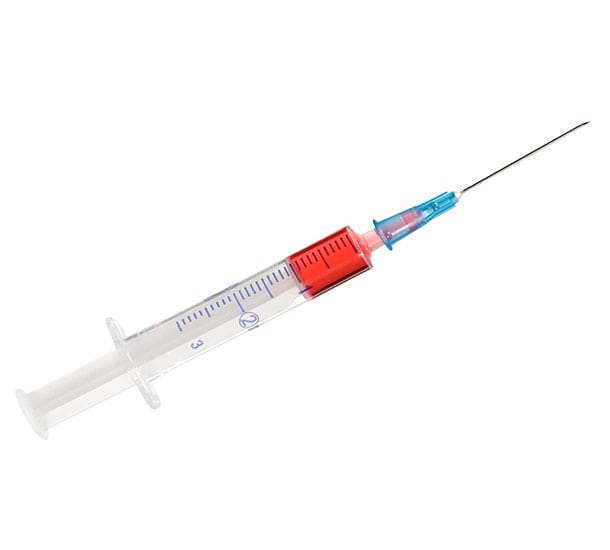What is PRP? How much does it cost for PRP? Is PRP Covered by Health Insurance? Is PRP covered by Medicare? Let’s dig in.
What is PRP?
PRP stands for platelet-rich plasma. This is a concentration of the patient’s own blood platelets in their serum. Blood is drawn from a peripheral site such as the arm or hand and then spun down in a centrifuge concentrating the platelets. Platelets contain growth factors and chemical mediators which can reduce inflammation, pain, improve blood flow and turbocharge the natural healing process. Current indications for PRP include patellar, hamstring and Achilles tendon injuries, golfer’s elbow, and mild knee osteoarthritis (1).
How Much Does it Cost for PRP?
The cost of PRP can vary significantly based upon where you live and the medical resources available in your community. The average cost for a PRP injection is between $1000-2000 for a single joint. Costs can vary. Factors that may impact price include:
1. Who Is Performing the Injections?
Are they being performed by a Nurse Practioner, a Physician Assistant, or a Physician. Board certification, and years of experience can make a difference and may cost more.
2. Where Is the Procedure Being Performed?
Is your procedure going to be at an alternative medical clinic such as a spa, doctor’s office, Ambulatory Surgery Center (ASC) or Hospital? At the Centeno-Schultz Clinic, all injections are performed in a procedure room where ultrasound and live x-ray are used to confirm accurate placement of the injected platelets. Sterility is key and should be evaluated. Is the clinic and procedure room clean? Is this area to be injected prepped in a sterile fashion? Infection is a dreadful complication that can compromise cartilage, tendons, ligaments, and muscles.
3. Number of Areas to Be Injected?
Is one joint or multiple joints to be injected? Are tendons, ligaments, and muscles also being injected? This is important for best clinical outcome and may affect the cost of the procedure.
Is PRP Covered by Health Insurance?
Insurance plans and their coverage can vary significantly. Unfortunately, most health insurance plans do not cover PRP injections. Some employee-sponsored health care plans cover Regenexx PRP procedures. Some of the workman’s comp and auto accident insurance plans cover PRP procedures. The question “Is PRP covered by health insurance” should be answered by either the clinic or your health care insurance.
Is PRP Covered by Medicare?
PRP is not covered by Medicare. In some cases, Medicare covers PRP for patients who have chronic non-healing diabetic wounds when specific criteria are met (3).
Does PRP Hurt?
PRP injections, because they are injections going into areas of injury or disease, need to use appropriate local anesthetics (numbing), guidance, and need to be done by practitioners who are adequately trained to treat the issue being treated. PRP injections may hurt depending upon several factors including:
Area to Be Injected
Rotator cuff tendons in the shoulder are more sensitive than knee joint injections.
Severity of injury
Severe tendinosis is typically more painful than a mild area of inflammation.
Size of the Needle
An 18 gauge needle is more painful than a small 27 gauge needle. (the larger the number the smaller the needle)
Size of the Area to be Treated
A severely inflamed patellar tendon will be more painful than a simple knee joint injection.
Beware of what is injected along with the PRP. Steroids should always be avoided as they are toxic to orthopedic tissue (4). Local anesthetics can also be toxic as specific local anesthetics can cause stem cell death and cartilage injury (5). Before the injection ask what is being injected along with the PRP to ensure the best clinical outcome.
Want to Learn More?
To learn more about how to choose the right stem cell clinic based on quality, please click on the mini-book here.
In Conclusion
PRP is a concentration of the patient’s own blood platelets in their serum. Platelets contain growth factors and chemical mediators which can reduce inflammation, pain, improve blood flow and turbocharge the natural healing process. There are a growing number of indications for PRP which include patellar, hamstring and Achilles tendon injuries, golfer’s elbow, and mild knee osteoarthritis. Is PRP covered by health insurance is a common question. Unfortunately, PRP is not covered by most health insurance programs or Medicare and costs between $1000-2000 dollars. Factors that may affect cost include areas to be treated, the individual providing the injection and the facility. PRP injections may be painful based upon several factors. Steroids and most local anesthetics should not be mixed with PRP as they will compromise outcome, stem cell function, and cartilage.
1.Hussain N, Johal H, Bhandari M. An evidence-based evaluation on the use of platelet rich plasma in orthopedics – a review of the literature. SICOT J. 2017;3:57. doi:10.1051/sicotj/2017036.
2.Wernecke C, Braun HJ, Dragoo JL. The Effect of Intra-articular Corticosteroids on Articular Cartilage: A Systematic Review. Orthop J Sports Med. 2015;3(5):2325967115581163. Published 2015 Apr 27. doi:10.1177/2325967115581163
4.Wei AS, Callaci JJ, Juknelis D, et al. The effect of corticosteroid on collagen expression in injured rotator cuff tendon. J Bone Joint Surg Am. 2006;88(6):1331–1338. doi:10.2106/JBJS.E.00806.
5.Dregalla RC, Lyons NF, Reischling PD, Centeno CJ. Amide-type local anesthetics and human mesenchymal stem cells: clinical implications for stem cell therapy. Stem Cells Transl Med. 2014;3(3):365–374. doi:10.5966/sctm.2013-0058
